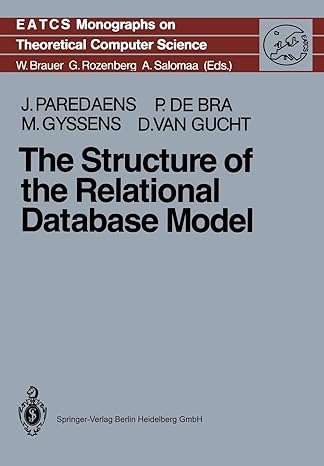Question
C++ Plz . Include the run result also A Graph is formally define as G=(N,E) consisting of the set N of vertices (or nodes) and
C++ Plz . Include the run result also A Graph
is formally define as G=(N,E) consisting of the set N of vertices (or nodes) and the set E of
edges, which are ordered pairs of the starting vertex and the ending vertex. Each vertex has ID and
value as its basic attributes. Each edge has weight, starting vertex and ending vertex.
A Graph can be a directed graph where vertices are connected by edges, and all the edges are directed
from one vertex to another.
A Directed Acyclic Graph (DAG) is a finite directed graph with directed cycles. This means from any
vertex v, there is no way to follow a sequence of edge that eventually loops back to v again.
An undirected graph is a graph where the edges are bidirectional.
The definition of the abstract class Graph is provided below. Note that all its member functions are pure
virtual. This is because the implementation of these functions is different from one graph to another. You
are allowed to slightly modify this class by adding new member functions.
class Graph{
public:
Graph();
virtual ~Graph();
//add in one vertex; bool returns if it is added successfully.
virtual bool addVertex(Vertex& v)=0;
//Bonus question: add in a set of vertices; bool retruns if it is
added successfully
//virtual bool addVertices(Vertex* vArray) = 0;
//the edges that has connection with this vertex need to be removed;
virtual bool removeVertex() = 0;
//remove a edge; as a result, some node may remain as orphan.
virtual bool addEdge(Edge& e) = 0;
//Bonus question : remove a set of edge; as a result, some node may
remain as orphan.
//virtual bool addEdges(Edge* eArray) = 0;
// remove the edge
virtual bool remove
// return bool if a vertex exists in a graph;
virtual bool searchVertex(const Vertex& v) = 0;
// return bool if a Edge exists in a graph;
virtual bool searchEdge(const Edge& e) =0;
// display the path that contains the vertex;
virtual void display(Vertex& v) const = 0;
// display the path that contains the edge;
virtual void display(Edge& e) const = 0;
// display the whole graph with your own defined format
virtual void display() const = 0;
// convert the whole graph to a string such as 1-2-4-5; 1-3-5; each
path is separated by ';'
// define your own format of a string representation of the graph.
virtual string toString () const = 0;
//remove all the vertices and edges;
virtual bool clean() = 0;
};
Problem 1: (65 marks)
1. Create a class Vertex and Edge to represent the vertices and edges of a graph. Provide text code of your
classes. (0 Marks, compulsory implementation)
2. Create a concrete derived class of Graph. It can be directed, undirected or DAG. Provide full code of the
derived class. Provide text code of your class. (5*13 = 65 Marks)
C++ Plz . Include the run result also
Step by Step Solution
There are 3 Steps involved in it
Step: 1

Get Instant Access to Expert-Tailored Solutions
See step-by-step solutions with expert insights and AI powered tools for academic success
Step: 2

Step: 3

Ace Your Homework with AI
Get the answers you need in no time with our AI-driven, step-by-step assistance
Get Started


